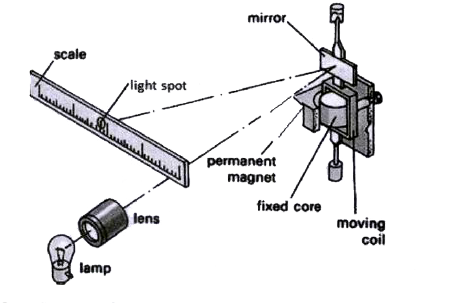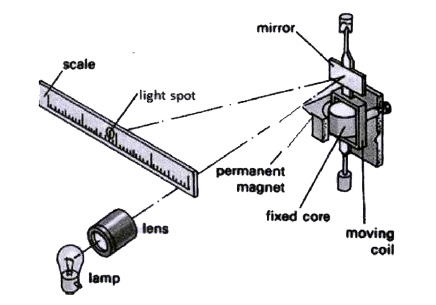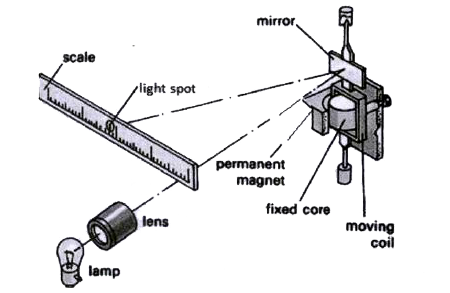Assertion: Sebum provides a protective oily covering for the skin.
Reason: Small amounts of nitrogenous wastes would be eliminated through saliva too.
if both assertion and reason are true and the reason is correct explanation of the assertion
if both assertion and reason are true but reason is not a correct explantion of the assertion
If assertion is true but reason is false
If both assertion and reason are false.
The correct Answer is:B
Sebum provides a protective oily covering for the skin.
Small amounts of nitrogenous wastes would be eliminated through saliva too.
Topper's Solved these Questions
- BOOK - A2ZCHAPTER - EXCRETORY PRODUCTS AND THEIR ELIMINATIONEXERCISE - Section C: Previous Years' Examination Questions (AIIMS Questions)16videos
EXCRETORY PRODUCTS AND THEIR ELIMINATION
- BOOK - A2ZCHAPTER - EXCRETORY PRODUCTS AND THEIR ELIMINATIONEXERCISE - Section C: Previous Years' Examination Questions (Assertion and Reason Type Questions )22videos
EXCRETORY PRODUCTS AND THEIR ELIMINATION
- BOOK - A2ZCHAPTER - EXCRETORY PRODUCTS AND THEIR ELIMINATIONEXERCISE - Section A : Topicwise Questions Topic 6 : Disorder Of The Excertery System32videos
EXCRETORY PRODUCTS AND THEIR ELIMINATION
- BOOK - A2ZCHAPTER - Digestion and AbsorptionEXERCISE - Section D : Chapter-end Test50videos
Digestion and Absorption
- BOOK - A2ZCHAPTER - LOCOMOTION AND MOVEMENTEXERCISE - Section D : Chapter-end Test50videos
LOCOMOTION AND MOVEMENT
Similar Questions
Assertion : Sound waves do not travel through vacuum.
Reason : The speed of sound is too small when compared to speed of light.View SolutionAssertion :− The primary function of sweat is to facilitate a cooling effect on the body surface.
Reason :− Small amount of nitrogenous wastes could be eliminated through saliva.View Solution
Knowledge Check
- Question 1 - Select One
A secretion that provides a protective oily covering for skin is
ASterols , hydrocarbons and waxesBSweatCSebumDBoth (a) and (c ) - Question 2 - Select One
Protective oily covering on the skin provided by
ASweat glandsBSebaceous glandsCLacrimal glandsDSudoriferous glands - Question 3 - Select One
Which of the nitrogenous waste eliminated through saliva is ?
AUreaBCreatineCHCO−3DUric acid
Assertion: Periplaneta americana is uricotelic insect.
Reason: Malpighian tubules absorb nitrogenous waste products and convert them into uric acid which is excreted out through the hindgut.View SolutionWhy sound cannot travel through vacuum ?
View SolutionII. Read the following text and answer the following questions on the basis of the same:
Galvanometer can sense/measure current. Improved mirror galvanometer was developed by William Thomson, later to become Lord Kelvin, in 1858. Thomson intended the instrument to read weak signal currents on very long submarine telegraph cables.
The fundamental problems of transmitting/receiving a singnal through a lengthy submarine cable was that the electrical current tended to be very low (as littles as 1/100,000th of a stadard light bulb). So, it was very difficult to detect it. To solve the problem it was thought that larger amount of electric current would be sent through the line. But Thomson had a different approach. He thought the best response was to devise a device that could read faint signals. The galvanometer, first invented in 1802, was a mean of detecting electric current. It consisted of a needle that was deflected by the magnetic field created by the electric current. But the galvanometers of the day could't detect the weak signals that came through a long underwater cable. But the improved version of galvanometer was highly sensitive to detect the lowest current. The mirror galvanometer consists of a long fine coil of silk-covered copper wire. In the heart of that coil, within a little air-chamber, a small round mirror is hung by a single fibre of floss silk, with four tiny magnets cemented to its back.
A beam of light is thrown from a lamp upon the mirror, and reflected by it upon a white screen or scale a few feet distant, where it forms a bright spot of light, when there is no current on the instrument, the spot of light remains stationary at the zero position on the screen, but the instant a current traverses the long wire of the coil, the suspended magnets twist themselves horizontally out of their former position, the mirror is inclined with them, and the beam of light is deflected along the screen to one side or the other, according to the nature of the current. If positive electric current gives a deflection to the right of zero, a negative current will give a deflection to the left of zero, and vice versa.
The air in the little chamber surrounding the mirror is compressed, so as to act like a cushion, and deaden the movements of the mirror, the mirror is thus prevented from idly swinging about at each deflections.
Improved mirror galvanometer was developed by
 View Solution
View SolutionII. Read the following text and answer the following questions on the basis of the same:
Galvanometer can sense/measure current. Improved mirror galvanometer was developed by William Thomson, later to become Lord Kelvin, in 1858. Thomson intended the instrument to read weak signal currents on very long submarine telegraph cables.
The fundamental problems of transmitting/receiving a singnal through a lengthy submarine cable was that the electrical current tended to be very low (as littles as 1/100,000th of a stadard light bulb). So, it was very difficult to detect it. To solve the problem it was thought that larger amount of electric current would be sent through the line. But Thomson had a different approach. He thought the best response was to devise a device that could read faint signals. The galvanometer, first invented in 1802, was a mean of detecting electric current. It consisted of a needle that was deflected by the magnetic field created by the electric current. But the galvanometers of the day could't detect the weak signals that came through a long underwater cable. But the improved version of galvanometer was highly sensitive to detect the lowest current. The mirror galvanometer consists of a long fine coil of silk-covered copper wire. In the heart of that coil, within a little air-chamber, a small round mirror is hung by a single fibre of floss silk, with four tiny magnets cemented to its back.
A beam of light is thrown from a lamp upon the mirror, and reflected by it upon a white screen or scale a few feet distant, where it forms a bright spot of light, when there is no current on the instrument, the spot of light remains stationary at the zero position on the screen, but the instant a current traverses the long wire of the coil, the suspended magnets twist themselves horizontally out of their former position, the mirror is inclined with them, and the beam of light is deflected along the screen to one side or the other, according to the nature of the current. If positive electric current gives a deflection to the right of zero, a negative current will give a deflection to the left of zero, and vice versa.
The air in the little chamber surrounding the mirror is compressed, so as to act like a cushion, and deaden the movements of the mirror, the mirror is thus prevented from idly swinging about at each deflections.
How the idly swinging of the mirror of mirror galvanometer is prevented?
 View Solution
View SolutionII. Read the following text and answer the following questions on the basis of the same:
Galvanometer can sense/measure current. Improved mirror galvanometer was developed by William Thomson, later to become Lord Kelvin, in 1858. Thomson intended the instrument to read weak signal currents on very long submarine telegraph cables.
The fundamental problems of transmitting/receiving a singnal through a lengthy submarine cable was that the electrical current tended to be very low (as littles as 1/100,000th of a stadard light bulb). So, it was very difficult to detect it. To solve the problem it was thought that larger amount of electric current would be sent through the line. But Thomson had a different approach. He thought the best response was to devise a device that could read faint signals. The galvanometer, first invented in 1802, was a mean of detecting electric current. It consisted of a needle that was deflected by the magnetic field created by the electric current. But the galvanometers of the day could't detect the weak signals that came through a long underwater cable. But the improved version of galvanometer was highly sensitive to detect the lowest current. The mirror galvanometer consists of a long fine coil of silk-covered copper wire. In the heart of that coil, within a little air-chamber, a small round mirror is hung by a single fibre of floss silk, with four tiny magnets cemented to its back.
A beam of light is thrown from a lamp upon the mirror, and reflected by it upon a white screen or scale a few feet distant, where it forms a bright spot of light, when there is no current on the instrument, the spot of light remains stationary at the zero position on the screen, but the instant a current traverses the long wire of the coil, the suspended magnets twist themselves horizontally out of their former position, the mirror is inclined with them, and the beam of light is deflected along the screen to one side or the other, according to the nature of the current. If positive electric current gives a deflection to the right of zero, a negative current will give a deflection to the left of zero, and vice versa.
The air in the little chamber surrounding the mirror is compressed, so as to act like a cushion, and deaden the movements of the mirror, the mirror is thus prevented from idly swinging about at each deflections.
The mirror galvanometer consists of
 View Solution
View Solution

